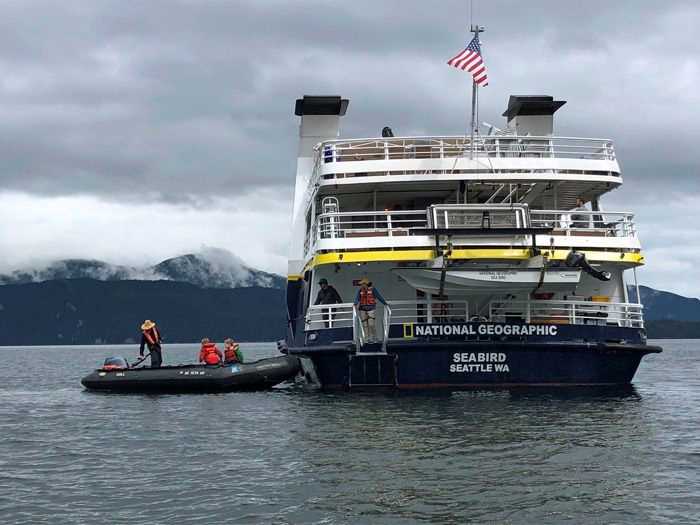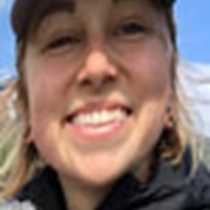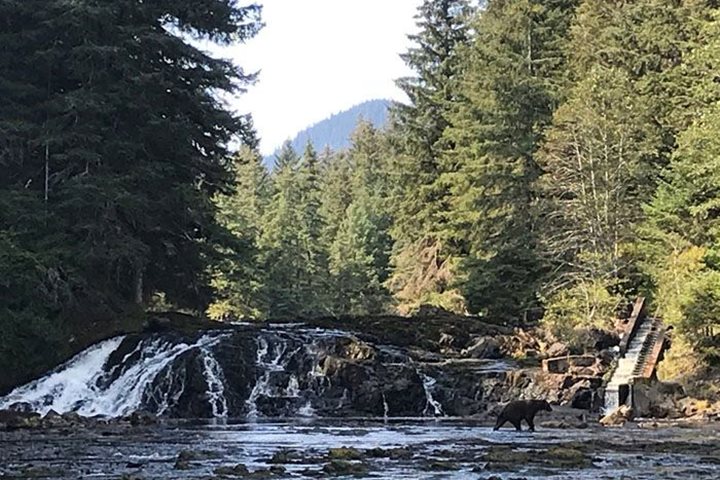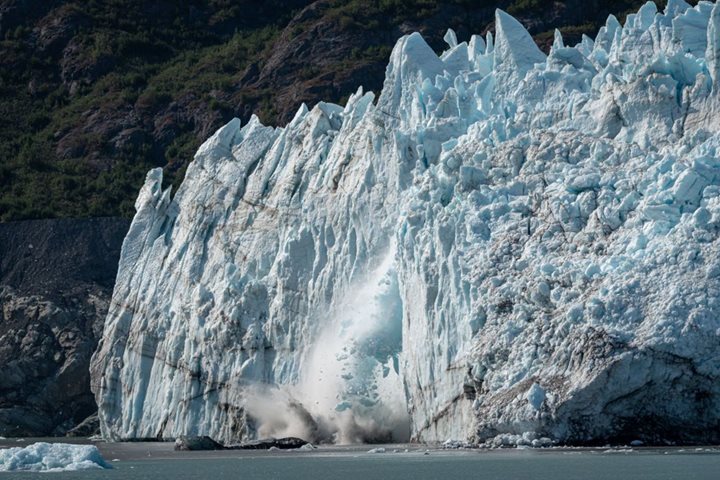We arrived in Freshwater Bay after a night of sailing through Chatham Strait. Soon after breakfast, we began a busy morning, packed with activities. Our landing was near Pavlof Harbor and the weather was typical for a Southeast Alaskan morning—lots of low-hanging clouds. When guests arrived on the shore, they cautiously stepped along the beach, keeping an eye out for the large number of sea stars that were exposed during low tide.
Some groups set out on hikes, making plenty of noise trying to notify the bears in the area of their arrival in the forest—Chichagof Island is known for its community of brown bears. The trail carried on beside the shoreline and approached a waterfall on the Pavlof River with a salmon ladder. This ladder was installed because the area is a common place for spawning and rearing habitat for sockeye, pink, coho, and chum salmon. Some hikers continued through the forest trail, passing a rock scramble and a beaver lodge near Pavlof Lake. A light drizzle and intermittent beams of sunlight made for beautiful photos of the scenic lake.
The National Geographic Global Explorers set off on their own adventure. They chose the path less traveled, heading straight through the forest and off any maintained trails. The proper bushwhack through the woods started out on game trails made by other animals, yet most of the three-hour trek was spent crawling under trees, stomping through the mud, and sliding down hills. It was exciting to say the least.
Meanwhile, other guests chose to travel by water. Zodiac cruises focused on the zonation of different animals that live in intertidal zones. Paddlers participated in a destination kayak instead of returning to the same point, which allowed for more time to explore the area. Some spotted harbor seals, otters, minks, and bald eagles.
After a well-deserved lunch, we watched a perfectly timed performance of humpback whales cooperatively bubble-net feeding surprisingly close to the bow. The undersea specialists set up the hydrophone so that guests could hear the whales communicating with each other. Cameras and binoculars were ready for a change in pitch of the vocalization—the feeding call or indication that the whales were done corralling the fish and ready to simultaneously lunge upward with mouths wide open to feed on the trapped fish.
During the rest of the afternoon and evening, we sailed through Icy Strait. Kim Heacox came on board after dinner for storytelling and a few songs in preparation for our next day at Glacier Bay.







